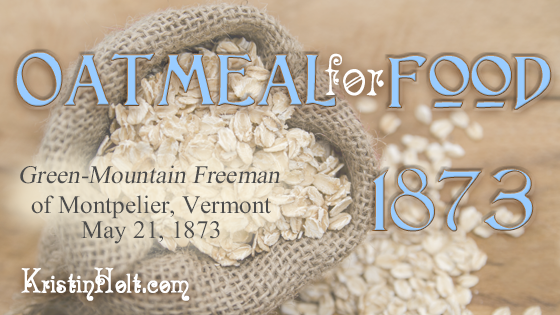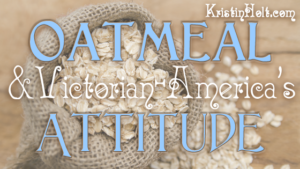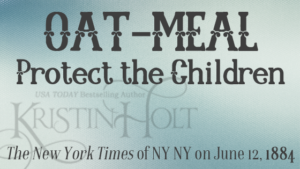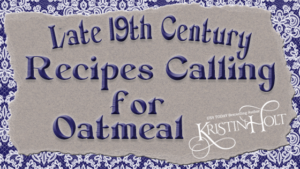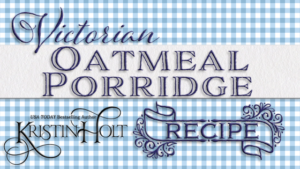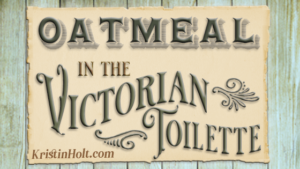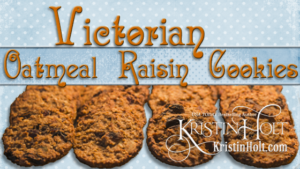Oatmeal for Food, 1873
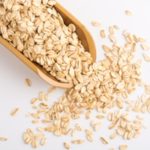
.
Oatmeal for Food, 1873
.
While researching the attitudes of Americans in the Victorian-era about grains eaten as breakfast porridge, I came across this article. Oatmeal for Food (1873) was published in the Green-Mountain Freeman of Montpelier, Vermont on May 21, 1873.
.
As this information supports a blog article I posted also today I wanted to provide this historic article in full. The digital copy of this nearly 150-year old newspaper is adequate enough, but tough to read. My transcription is below, along with the digital scans. I took great care in ensuring I maintained the formatting, spelling, typesetting particulars, and punctuation. In preserving spelling, sometimes it appears I’ve left a typo (but that’s not the case). Sometimes yesteryear’s means of setting apart a title appears incorrect today. Read on for the article in full, as referenced in Oatmeal & Victorian-America’s Attitude.
.
.
Full Transcription of the Historic Article
.
Oatmeal for Food.
.
……….Oatmeal for food in the family is rapidly taking the place of other articles, especially in the shape of porridge for breakfast. It is easily prepared, is very nourishing, and is also cheap. No better or more wholesome dish can be set before a family than a smoking dish of porridge; and used with plenty of good fresh milk, and a little sugar, it is eaten with great gusto in many of our households. “Daisy Eyebright,” in the , gives the following directions for preparing oatmeal in several ways.
.
……….Oatmeal and invalids are closely associated in the minds of many persons, who can hardly be made to believe that it is a far more nutritious article for daily food than the loaf of wheaten bread. To be sure, we know that there are men in Scotland who work out on their bleak hills every day in the year, with scarcely any other food than that obtained from their oat fields; and their stalwart forms and sinewy muscles, bright eyes and ruddy complexion bear witness to the healthfulness of the food, and its great superiority over the hot biscuit and fried doughnuts, which are the bane of our farmers.
Yet we are not accustomed to either preparing or eating it as a daily ration. It is on this account that I desire to sing its praises through the Country Gentleman, which is read with eagerness and pleasure from the Atlantic to the Pacific Slope. Scotch oatmeal is an entirely different article from the American, because the meal is prepared by a peculiar process, and then ground to three degrees of fineness.
It improves in quality by keeping, while that prepared in this country becomes bitter and unpalatable; the closer it is packed away in bags and barrels, the better it will keep. The first degree of fineness is called groats; then the meal is ground again with the stones set closer, a fine flour or meal is produced, and by setting this, a still finer meal, which is used for making bannocks, or oatmeal cakes, while the residue is boiled into parritch, which is the universal dish of Scotland,—
.
Victorian Paragraphs
…were apparently of most unusual sizes.
Or was that Rodents of Unusual Sizes? (The ROUSes?)
Seriously– we’re only to the MIDDLE of a paragraph about 10 million words long. What IS that about? Was paper that expensive? Did Victorian newspaper columnists not know what a return-key looked like on their newfangled typewriters? Did the highly skilled men who set type run out of those “space bars” or whatever they used to hold type in place (at end of a paragraph)?
This nonsense of long, long, long paragraphs (Rapunzel long, mind you) was not uncommon in the latter half of the nineteenth century. I see these oversized paragraphs far more often than not.
.
Oatmeal For Food, Continued
.
—and is now much esteemed at the tables of those who have been forced to eschew the hot cakes of the United States. This parritch is what I would introduce at the tables of every farmer in the country, and when it is properly prepared, and eaten with cream of rich milk, few more wholesome or tempting dishes can be eaten, and few upon which a harder day’s work can be accomplished. Children of all ranks in Great Britain are fed upon this diet, which the poet Burns styles “The halesome parritch, chief of Scotia’s food.”
.
This most desirable meal gives strength to the whole muscular system, and renders it capable of enduring a great amount of manual and mental labor. It is quite as healthful for the student as the farmer–for the delicate lady of fashion as for the hard-handed washer-woman. All classes of mechanics would also be benefited by its use, for there is no doubt that the wheaten loaf, potatoes, meat and the like do not afford them sufficient nutrient.
.
Many of them are sad sufferers from dyspepsia and its attendant ills; and this diet is particularly adapted to them, as it is most easily digested. Oatmeal is more substantial food than even meat, and students say that it will give clearer heads and more mental vigor than even roast beef or mutton. Besides, one does not tire of it, and for both breakfast and supper it is always welcome, and can be eaten with milk and sugar, or butter and syrup, or with nothing but salt.
.
It is particularly good also for mothers upon whose nervous forces too great a demand is made, and the system fails to maintain its equilibrium, and they become low-spirited and nervous, and the physicians cannot heal their diseases. Oatmeal requires to be cooked slowly, and the water must be boiling hot when it is stirred in. I give a few recipes for preparing various dishes from it:
.
Remember to Guard Your Paragraph Lengths
Just sayin’.
Now, on to those delicious-sounding 19th century recipes to use all that oatmeal in your pantry.
.
Oatmeal For Food, Continued
.
……….Oatmeal Porridge.—Take one quart of boiling water in a pail, and stir into it one pint of oatmeal which has been soaked in one pint of warm water over night. Place the pail in a kettle of boiling water, and let it boil steadily for half an hour; then stir in one cupful of milk, and boil for ten or fifteen minutes. Season with salt, and eat with cream and sugar. This will warm over as good as when freshly boiled. The milk need not be added unless one prefers it.
.
……….Oatmeal Breakfast Cake.—Take one pint of oatmeal, a pinch of salt, and just enough warm water to stir it as thick as rye griddle cakes. Pour it into a shallow baking pan, and bake for twenty minutes in a hot oven. Or if the oven cannot be heated in season for breakfast, turn the batter into a buttered frying -pan, and set it on the stove closely covered, and bake for fifteen minutes; then brown in the oven. Break open the cake and spread it with butter, and you will prefer it to fried doughnuts or batter cakes. It can also be cooked as griddle cakes, by adding a handful of wheat flour and a little more warm water.
.
……….Oatmeal Cracknels or Scotch Bannocks.—Sift enough oatmeal to make one quart of fine meal; stir into it warm water enough to barely moisten it, and add a pinch of salt. Set it away in a pan for ten to fifteen minutes, or even more, to let it swell; then roll it out on the bread board, using wheat flour for both board and rolling-pin, until only a quarter of an inch in thickness. Cut it with a cookie cutter, and bake in a slow oven, as they require only moderate heat and should only be slightly browned. If baked properly, these cakes will snap in the fingers, and possess a pleasant, nutty flavor, and require no butter to make them palatable. If kept in a close jar, they are good for some months after being baked. In Scotland the bannocks are preserved through the year, in a barrel of oatmeal.
.
……….Oatmeal as a Summer Drink.—Two and a half pounds of oatmeal mixed with a quart of water, and then stirred into a shaker pait [sic; typo in the press setting of 1873? Meant to be ‘pail?’] full of water, makes a very refreshing beverage for men who are forced to labor in the intense heat of furnaces, &c., and also for farm bands in haying and harvesting. Drinking it is supposed to prevent the exhausting efforts of long continued perspiration, and is at once both nourishing and satisfying. In the large iron foundries and glass works in Europe, it has long been in use, and has been found to produce, although unstimulating, a decided relief.
.
Raw oatmeal is frequently eaten by the Scotch, and yet I should not call it raw, as in the process of kiln-drying it certainly becomes well-cooked. Two teaspoonfuls of meal mixed in a tumbler of cold water is an excellent drink in case of fever, both for children and grown persons. Let me beg of the housekeepers in our land to try this nutritious and healthful article of diet; give up your biscuit and hot pancake as abominations, and fit only for those who possess iron-clad stomachs; and let us try to bring up our sons and daughters to be strong nerved and strong muscled.
.
_____________________________________________
.
Green-Mountain Freeman of Montpelier, Vermont on May 21, 1873.
Outside of title, all bolded characters were added for emphasis.
.

.
Digital Scans of this Victorian-American Newspaper
.
These scans are (together) the same as the transcribed article, above. Oatmeal for Food, 1873.
.
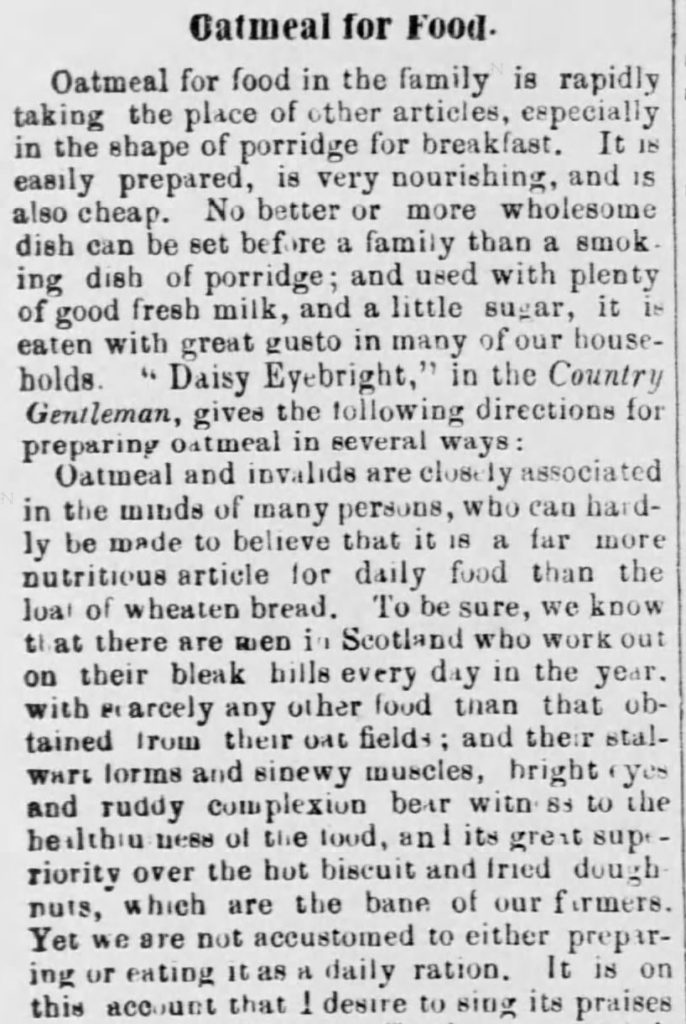
1) “Oatmeal for Food” published in Green Mountain Freeman of Montpelier, VT on May 21, 1873. Included in an article of the same name by Author Kristin Holt. Part 1 of 7.
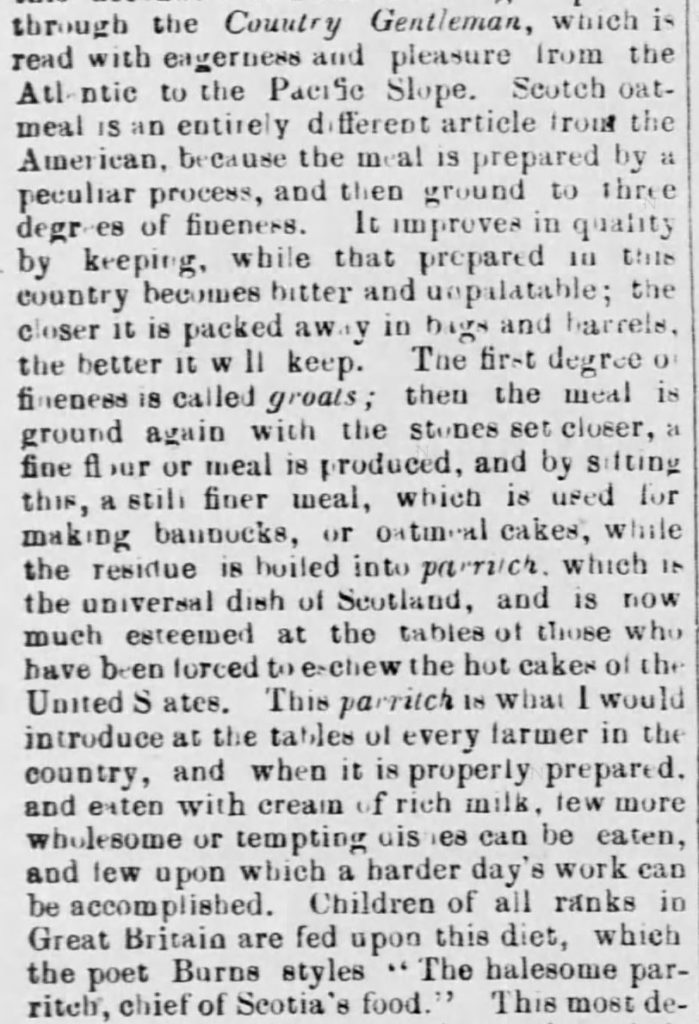
2) “Oatmeal for Food” published in Green Mountain Freeman of Montpelier, VT on May 21, 1873. Included in an article of the same name by Author Kristin Holt. Part 2 of 7.
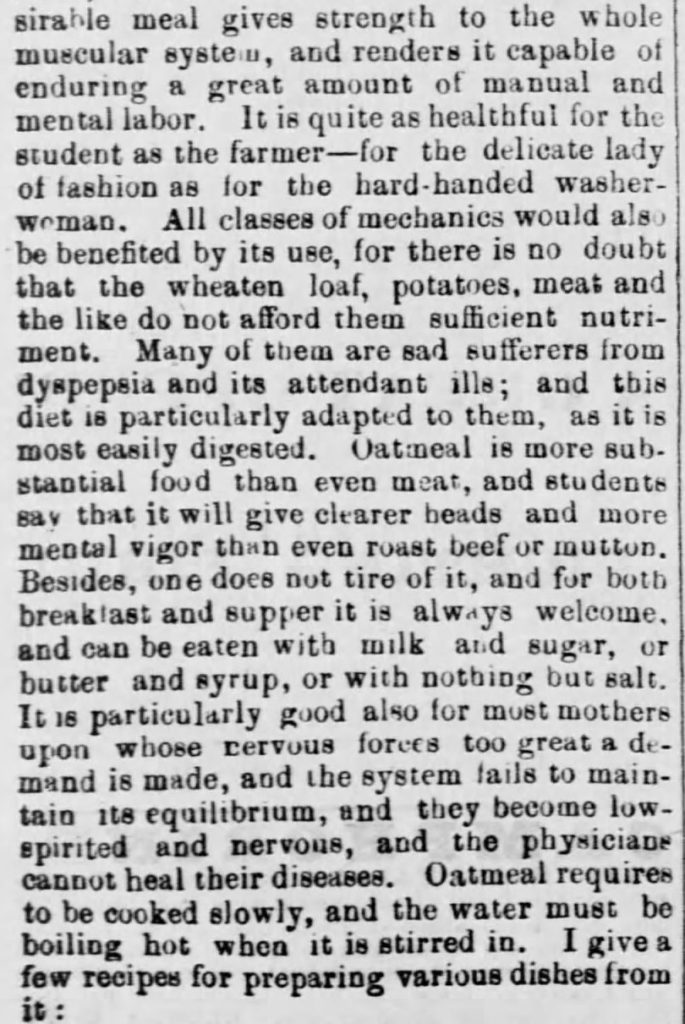
3) “Oatmeal for Food” published in Green Mountain Freeman of Montpelier, VT on May 21, 1873. Included in an article of the same name by Author Kristin Holt. Part 3 of 7.
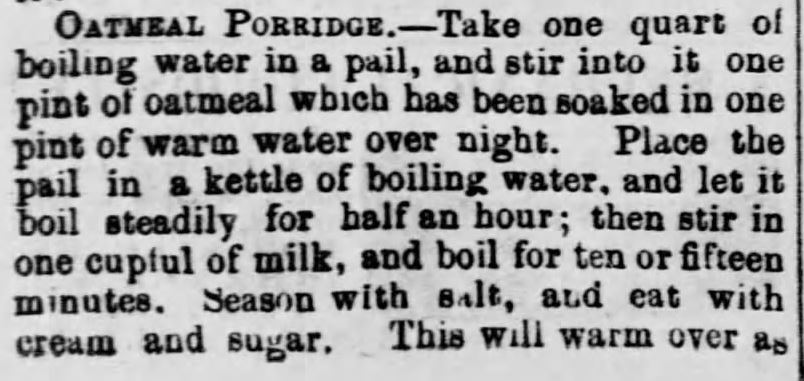
4) “Oatmeal for Food” published in Green Mountain Freeman of Montpelier, VT on May 21, 1873. Included in an article of the same name by Author Kristin Holt. Part 4 of 7.
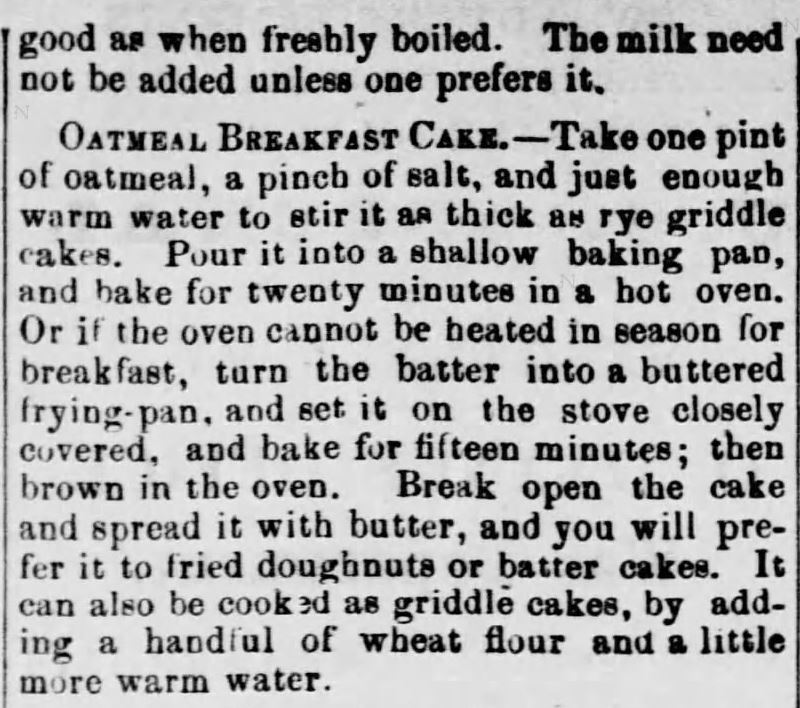
5) “Oatmeal for Food” published in Green Mountain Freeman of Montpelier, VT on May 21, 1873. Included in an article of the same name by Author Kristin Holt. Part 5 of 7.
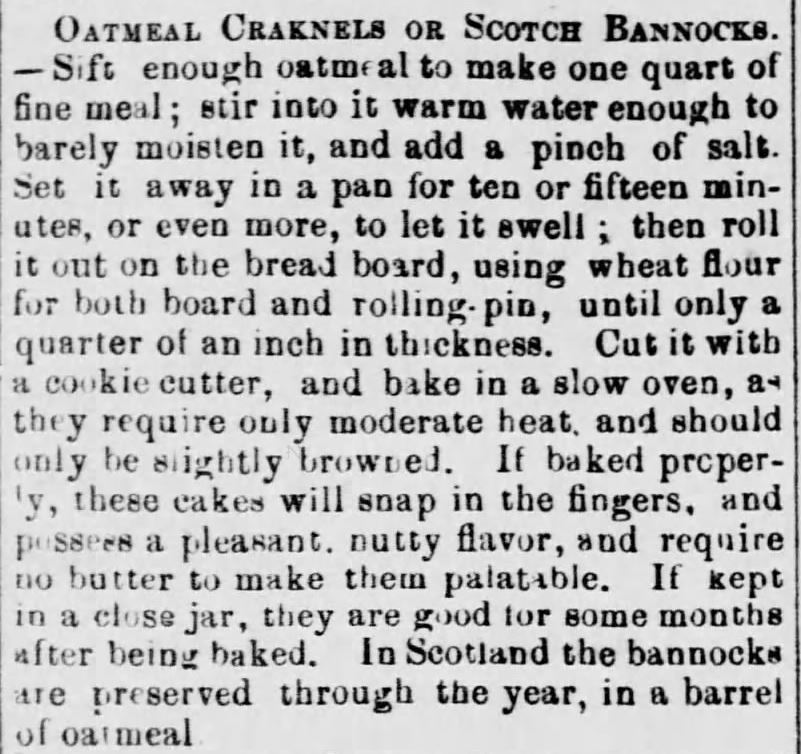
6) “Oatmeal for Food” published in Green Mountain Freeman of Montpelier, VT on May 21, 1873. Included in an article of the same name by Author Kristin Holt. Part 6 of 7.
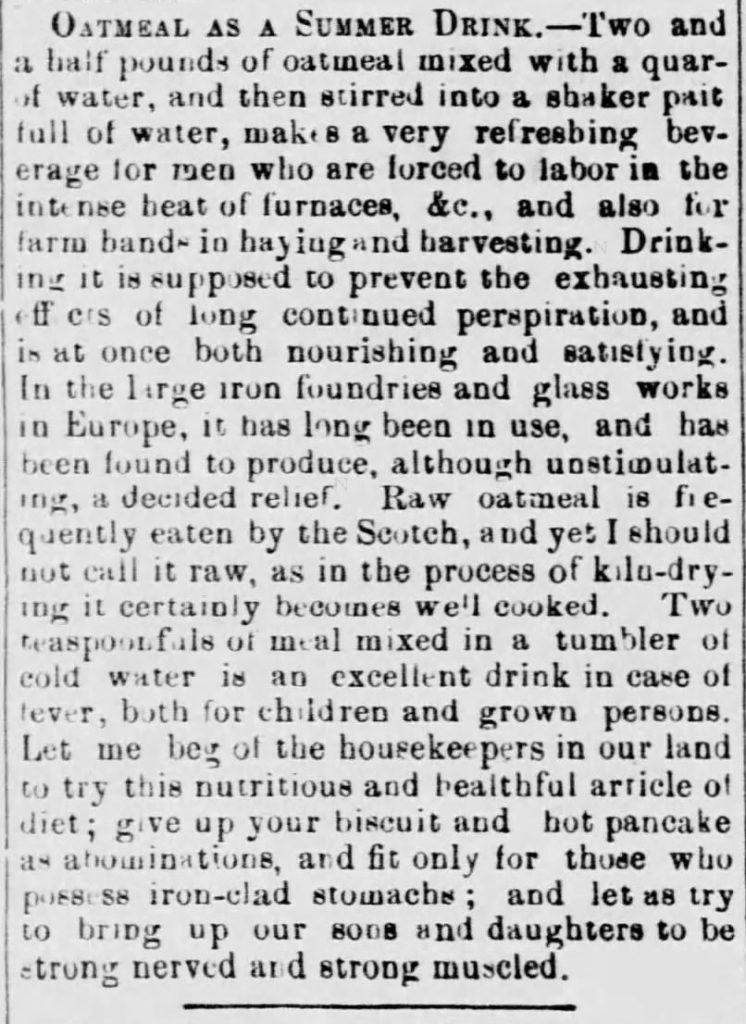
7) “Oatmeal for Food” published in Green Mountain Freeman of Montpelier, VT on May 21, 1873. Included in an article of the same name by Author Kristin Holt. Part 7 of 7. “Oatmeal as a Summer Drink.”
.

.
Historical Insights
.
Notice that this newspaper clipping contains serious instructions about how to prepare their proposed recipes (often known as “receipts” in Victorian America). This is uncommon and noteworthy.
.
Most 19th Century recipes assume the cook or baker knows a great deal about the processes of various cooking methods. Ingredients are included, and sometimes an amount is provided. Other times, and with sometimes significant ingredients by volume, amounts are not given, and neither are instructions. Example with a cookie recipe: “stir in enough flour.” That works great with a practiced cookie baker. I’d have no trouble, personally. But my daughters? (They’d be, in this situation,) Absolutely clueless.
.

.
What Insights Did You Glean?
.
Please scroll down and comment. We’ll all benefit from other points of view.
What did you notice?
.

.
Related Articles
.
This vintage newspaper article was brought to you as part of this tasty and slightly off-topic series of blog posts on Victorian Oatmeal Cookie recipes.
.
Updated April 2021
Copyright © 2019 Kristin Holt LC
Oatmeal for Food, 1873

